UNIT 3.3
FISCAL POLICY
3.3.1 Direct and indirect taxation;
3.3.2 Principles, methods and forms of taxation.
Fiscal Policy
MEANING
The fiscal policy is defined as "The deliberate manipulation of government income and expenditure for achieving economic and social objectives"
The government expenditure and taxation are referred to as the instruments of fiscal policy. These are very powerful instruments because any change in them act directly on the economic variables like employment, output and prices etc. Fiscal policies differ according to economic stage of the business cycle. Government spending and taxing policies designed to cure recession should not be the same as those aimed at curbing inflation. Thus two distinct classes of policies are necessary.
(1) During recession to expand the economy government should cut taxes and raise government expenditures. This is known as expansionary fiscal policy.
(2) During the period of high inflation government should raise taxes and cut government expenditures. This is known as contractionary fiscal policy.
OBJECTIVES OF FISCAL POLICY
Fiscal policy is perhaps the most important tool in the hands of government for the achievement of desired economic and social targets. Following are some of the main objectives of fiscal policy.
(1) A high and stable level of employment.
A well planned policy of government spending and taxation is very much helpful in achieving the target of stable and high employment. During the periods of high unemployment government may start new projects of public welfare by increasing public expenditures. On the other hand tax incentives should be given for increasing private investment in various employment generating projects.
(2) Price stability.
Price fluctuations are normal in modern capitalistic economies but frequent and sharp changes in prices not only create uncertainty for the investors but also cause problems for the consumers and government.
Government can attempt effectively to check price changes through its fiscal measures. During inflation a contractionary fiscal policy i.e. increase in taxes and reduction in public spending is desirable and on the other hand during the period of falling prices a reduction in taxes and increase in public spending can do good.
(3) A satisfactory balance of payment position.
A persistent deficit in balance of payment position is worrisome for any government. The government can improve its balance of payment position by providing tax concession to export oriented industries for increase in exports. On the other hand an increase in import duties and tariffs can be helpful in reducing imports. Thus fiscal policy is helpful in making the balance of payment position satisfactory.
(4) A high rate of economic growth.
The main objective of the fiscal policy is to ensure high rate of economic growth and development. The government formulates its tax and expenditure policy in such a way that it stimulates the various factors of economic growth and development. Public expenditures are directed to build infrastructure and provide a base for the stimulated economic activities. The tax structure is carefully designed to give maximum incentives for the development of desired sectors of the economy.
(5) A fair distribution of income and wealth.
The fiscal policy is also important for making the income and wealth distribution equitable. A progressive tax system is usually applied to tax the incomes and properties of rich classes. The income received through these taxes is spent on the projects which are income generating and beneficial for the poor classes. In this way fiscal policy is crucial in making the income distribution fair.
(6) Social security.
The public expenditure on retirement pensions, free health care, rehabilitation of disabled people etc is usually a part fiscal policy. The objective of such expenditures is to ensure some adequate minimum level of income and to prevent a family from suffering undue hardships in the time of need.
(7) Allocation of resources.
The state uses public funds and the instrument of fiscal policy such as taxes, tariffs, grants and subsidies to affect the allocation of resources both sector wise and industrially. The products of some industries can be taxed while other industries receive subsidies. Investments in some sectors may be encouraged by giving tax concession incentives or by giving investment grants.
(8) Encourage saving.
A well designed fiscal policy also encourages more saving in a country. Taxes on luxuries and unnecessary spending induce people to spend less and save more.
(9) Provision of public goods and services.
Public goods are those things which are used by the community collectively. These things include roads, street lights, sewerage etc. These goods should be supplied by the state and financed by compulsory levies known as taxes.
(10) Controlling the business cycle.
Taxation, public expenditure, administration of governmental loans, public works, governmental grants and subsidies etc form a part of fiscal policy of state. The main objective of fiscal policy is the achievement of the goal of development with stability. During the boom period, fiscal policy is so designed as to take away excess money in the public hands. This is done by increasing taxes and reducing public expenditures. During the period of recession the opposite measure are taken. Thus fiscal policy helps in controlling the adverse effects of business cycles and makes it possible to achieve development with stability.
CANONS OF TAXATION
A good system of taxation must satisfy certain general principles. Adam Smith laid down the following four canons of taxation.
(1) Canon Of Equality:
This is the most important canon of taxation. Equality or equity means that every ax payer should contribute towards the support of the government according to his ability to pay. This does not mean that all people rich or poor should pay equal tax or at equal rate. Equality means equality of sacrifice. The equality of sacrifice can only be maintained when the rich are required to pay tax at a greater rate than the poor people.
(2) Canon of certainty:
This canon says that every thing about a tax should be definite and certain. According to this canon there must be certainty about the time of payment, the manner of payment and the quantity to be paid. It will give greater confidence to the government about its estimates and that the tax payer will also feel certain about his budget. Uncertainty encourages corruption.
(3) Canon of convenience:
This canon implies that every tax ought to be levied at the time or in the manner in which it is likely to be most convenient for the contributor to pay it. If a tax is convenience, the payer will pay it at the proper time without reminder. For example a person drawing a monthly salary likes to pay at the time of receiving his salary every month.
(4) Canon of economy:
This canon implies two things. Firstly, the cost of collection of a tax should be small in proportion to yield. Secondly, the tax must not obstruct in any manner the economic development of the country. If a tax is contrary to these two principles it is regarded as costly and uneconomical.
OTHER CANONS :
Besides these canons of taxation , there are four other important principles of taxation. They have been added by later economists. They are as follows:
(5) Canon of Productivity:
It means that taxes should yield sufficient revenue to the government. A few tax which are fairly productive are much better than a large number of taxes which not so productive.
(6) Canon of elasticity:
This principles means that tax system should be capable of expansion and reduction according to the requirements of the state. Taxes which in case of need can be conveniently increase in amount without any additional cost of collection are considered to be good taxes. Income tax is a very good example of an elastic tax.
(7) Canon of simplicity:
The system of taxation should not be complicated and difficult to be understood by an average person. The basis of tax and method of calculation should be simple, plain and intelligible.
(8) Canon Of Diversity:
This principle says that a large variety taxes is always preferable to a small number. Every tax has some defects. In a varied tax system, different taxes tends to cancel to each other. Variety is also desirable from the point of view of yield, stability and justice.
Meaning And Types of Taxes
MEANING:
A tax is defined as "A compulsory contribution which the citizens make to the state for the support of the government"
The state does not promise any direct proportionate benefit to be given to those who are made to pay the taxes. It must be understood that a tax is a compulsory contribution which must be made. There is no escape from payment of a tax except through illegal means and further those who are made to pay tax should not expect to get any special benefit from the government in proportion to the amount of tax paid.
A tax is imposed on certain basis. If the basis of the tax is the income of a person, this would be called as an income tax. Similarly there are other taxes like property tax or wealth tax.
TYPES OF TAXES:
Some times, a distinction is made between various taxes on the basis of the changes in the tax rates. According to this criterion there are three forms of taxes. These forms are discussed as under.
1. Progressive Tax.
A tax is said to be progressive if the rate of taxation keeps on rising with rise in income, property and wealth of the people. For example if the people with income of fifty thousand are asked to pay tax at the rate of 10% and those whose income is above fifty thousand are asked to pay at the rate of 15%. Then this is a case of progressive income tax system.
2. Proportional Taxes:
A proportional tax system is one where the rate of the tax is same for the people of all income groups. Of course, the total amount of money paid by a rich man would be more than what is paid by a poor man, yet they are paying the same proportion of their income.
3. Regressive Taxes.
A tax where higher income groups are taxed at lower rate and the lower income groups are taxed at a higher rate is called a regressive tax system.
An other classification of taxes is based upon their shiftability. A tax is said to have been shifted if some one other than the person upon whom the tax has been levied, bears the burden of the tax. The burden of a tax is borne by the man who pays it finally. There are two forms of taxes in this classification.
1. Direct Tax
If impact and incidence of a tax is on the same person, it is called a direct tax. In other words, all such taxes the burden of which cannot be shifted on to other persons are called direct tax. e.g. income tax.
2. Indirect Tax
If impact and incidence of a tax is on two different person, it is called an indirect tax. In other words, all such taxes the burden of which can be shifted on to other persons are called indirect direct tax. e.g. Sales tax.
ADVANTAGES OF DIRECT TAXES
Direct taxes are preferred due to following advantages.
(1) Economical:
The main advantage of direct taxes is that their cost of collection is very low as compared to revenue that they yield.
(2) Certainty:
These taxes are of a certain nature and therefore government can easily estimate the amount of revenue that it is going to get by imposing them.
(3) Equitable:
Direct tax are more equitable because the principle of progressive taxation can be easily applied to them.
(4) Elasticity:
Direct taxes are elastic in nature and therefore their yield can be easily raised by slightly changing the tax rate.
(5) Awareness:
Direct taxes create awareness among those who pay the taxes. This is because they are conscious of the contribution which they are making to the revenue of the government. These people usually become more responsible citizens.
DISADVANTAGES OF DIRECT TAXES:
There are also certain disadvantages associated with the direct taxes. These drawbacks are as under.
(1) Inconvenient:
These taxes are very inconvenient because the person who pays such tax feels the direct tax feels the pinch of such tax.
(2) Reduced Saving:
Heavy direct taxes reduce the saving capacity of the people. They are a disincentive for further investment.
(3) Tax Evasion:
These taxes can easily be evaded by submitting false returns or by bribing the tax officials.
ADVANTAGES OF INDIRECT TAXES
The chief merits of indirect taxes are as follows.
(1) Convenient
These taxes are normally included in the prices of the commodities, therefore they are convenient to pay. Further these taxes do not pinch the consumers very much because they are included in prices.
(2) Less Evasion
As these taxes are included in the price of the commodities there is no possibility of evasion in the case of indirect taxes.
(3) Resource Allocation
Indirect taxes can help government to allocate scarce resources in a desirable manner. For this purpose heavy taxes on luxury and undesirable goods can reduce their consumption, and resources can be diverted to the production of other commodities demanded by the people.
DISADVANTAGES OF INDIRECT TAXES:
There are certain drawback of indirect taxes. These are discussed as under.
(1) Regressive In Nature:
Indirect taxes are usually regressive in character. A rich man and a poor man buying the same commodity have to pay the same amount of the tax. Therefore such persons place same burden upon the poor than the rich.
(2) Uncertain:
The revenue from such taxes is usually uncertain. When a tax is imposed upon a tax its price goes up leading to fall in its demand. Therefore uncertainty is created regarding he expected revenue from such taxes.
(3) Uneconomical:
Such taxes are usually uneconomical. It is because the cost of collection is high, because
a good deal of expenditure on administration are involved for its collection.
All governments impose both direct and indirect taxes for raising the revenue necessary to meet the public expenditures. The government should keep in mind the limitation of both type of taxes and impose them only to that extent that they yield maximum revenue with the minimum of burden on the community.

